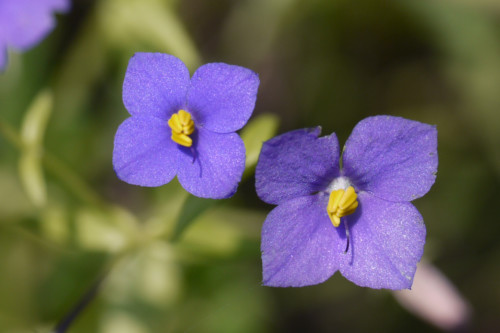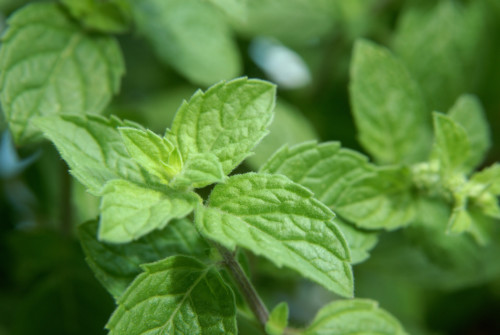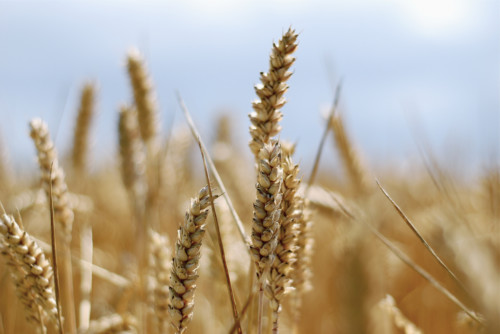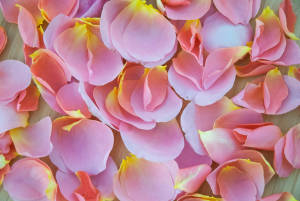Understanding The Flavors– and Herbs– of the Persian New Year
Historically, coverage of Persian New Year celebrations in the United States have been relegated to cultural institutions and food magazines interested in the rich array of herbs and spices that go into Persian New Year cuisine– to say nothing of the rich culture behind it. But with many people noting that this year’s Persian New Year will be dampened by the travel ban, our support of foreign holiday celebrations is more important than ever. For those interested in food and curious about Persian culture, Persian New Year (also known as Nowruz) is a great opportunity to learn more about a valued ethnic tradition within the landscape of American culture. Accordingly, we’ve compiled a handful of herbs, flavors, flowers, and dishes to look out for on March 21st. Persian New Year is all about nature and is best celebrated with a feast– so get out there and eat your fill.
Violet Flowers
Exacum affine, also known as the Persian violet, is a species of flower native to Yemen that has come to be associated with Persian New Year: the time of year that this flower starts to pop up in rock areas or gardens around the country (or wherever it is planted) is usually a sign that Persian New Year is coming. (Persian New Year begins on the spring equinox and then lasts 13 days; it’s a holiday dedicated to celebrating nature.) Seek out Persian violets at your local nursery for an authentic, from-the-garden centerpiece at a meal, or try spotting them in the wild during these first two weeks of spring.
Cucumbers and Mint
Is there anything more refreshing than cucumbers and mint? The two are frequently paired together in spa waters and hydrosols because of their cool, calming attributes– but they are also frequently paired together with yogurt and garlic as a sauce to offset spicy middle eastern flavors. Yogurt with cucumbers and mint (mahst khiar) is a common staple at Persian restaurants like Darya in Santa Monica or Persepolis in New York, where pickled cucumbers and sabzi khordan— a plate of fresh herbs served at most Persian meals, which functions kind of like a salad– are de rigueur.
Wheat Grass, Hyacinth, and Garlic (Among Others)
Haft-Seen is a tabletop arrangement of seven symbolic items traditionally displayed at Nowruz, which all begin with the letter S (in the Persian alphabet). As articulated by Bon Appetit‘s Andy Baraghani, recalling these these items from his childhood, these items include: “sabzeh (wheat grass), which stands for rebirth and which we usually grew ourselves; serkeh (vinegar) for patience; seeb (apples) for beauty; seer (garlic) for health; senjed (wild olive) for love; samanu (wheat germ pudding) for affluence; and sombal (hyacinth) for spring.”
Parsley, Dill, Cilantro, Turmeric, and Fenugreek
No Persian New Year celebration would be complete without Kuku, a traditional Persian egg dish similar to fritatta that is heavy on the herbs. Parsley, dill, cilantro, turmeric, and fenugreek are just a few of the many immunity-boosting, inflammation-busting herbs that can traditionally be found in this dish, which is usually served just slightly warm or at room temperature. (Michelle Obama even had it at her White House Nowruz celebration last year.) An easy version of this traditional dish can be made by chopping a variety of green herbs and mixing them with walnuts, dried, cranberries, and just enough herbs to bind everything together– but there’s nothing like going to your local Persian market and tracking down the original. (Try it with yogurt or wrapped in a lavash for an easy, on-the-go sandwich.)
Rose Petals, Dates, and Pistachios
Dates are often associated with middle eastern cuisine (especially desserts), as the sweet, lush fruit is native south west parts of Iran (before they migrated across the globe to Southern California). Astamaran (semi-dried date), Khork Shani (which is a dried date), Zahedi, Dayri, Hallavi, Barhi, Khassui, Mordar Sang, and Kabkab are just a few of the Persian varieties of date one is apt to find at a middle eastern package store that are worth seeking out. (Those in the Los Angeles area should check out the small groceries around Persian Square on Westwood Boulevard, which is home to the largest Iranian diaspora in the world.) Meanwhile, rose water ice cream, rose pudding, and other rose-infused desserts like Saffron-Rose Water Brittle are all the rage when it comes to prepared Persian desserts. Pistachios, which are also prepared in many rose-flavored dishes in this context, are generally sprinkled on top.







































